Visibly Human Health and Disease in the Human Body
The Liver and Hepatic System
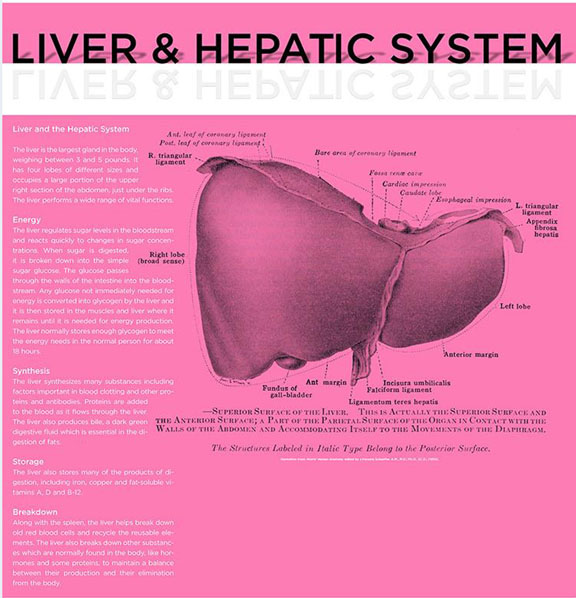 The liver is the largest gland in the body, weighing between 3 and 5 pounds. It has four lobes of different sizes and occupies a large portion of the upper right section of the abdomen, just under the ribs. The liver performs a wide range of vital functions.
The liver is the largest gland in the body, weighing between 3 and 5 pounds. It has four lobes of different sizes and occupies a large portion of the upper right section of the abdomen, just under the ribs. The liver performs a wide range of vital functions.
Energy
The liver regulates sugar levels in the bloodstream and reacts quickly to changes in sugar concentrations. When sugar is digested, it is broken down into the simple sugar glucose. The glucose passes through the walls of the intestine into the bloodstream. Any glucose not immediately needed for energy is converted into glycogen by the liver and it is then stored in the muscles and liver where it remains until it is needed for energy production. The liver normally stores enough glycogen to meet the energy needs in the normal person for about 18 hours.
Synthesis
The liver synthesizes many substances including factors important in blood clotting and other proteins and antibodies. Proteins are added to the blood as it flows through the liver. The liver also produces bile, a dark green digestive fluid which is essential in the digestion of fats.
Storage
The liver also stores many of the products of digestion, including iron, copper and fat-soluble vitamins A, D and B-12.
Breakdown
Along with the spleen, the liver helps break down old red blood cells and recycle the reusable elements. The liver also breaks down other substances which are normally found in the body, like hormones and some proteins, to maintain a balance between their production and their elimination from the body.
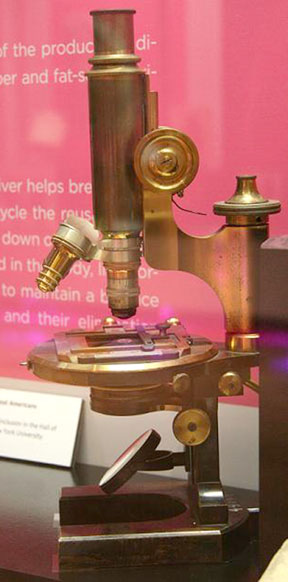
Zeiss microscope
.
Maj. Walter Reed and Typhoid Board member, Lt. James Carroll, used this microscope. Between 1898 and 1899, Dr. Carroll used a microscope to diagnose patients with typhoid, concluding that Army doctors identified only half of the cases correctly. By collecting detailed case histories of soldiers from over 100 regiments, the board disproved several theories of how typhoid was transmitted and established that an infected person directly or indirectly spread the disease to others in his unit. M-030 00420

Normal liver, plastinated
NMHM 1998.0033.42
|
|
|

Medallion, Hall of Fame for Great Americans (New York University, 1963)
Medallion commemorating Walter Reed’s inclusion in the Hall of Fame for Great Americans at New York University. M-901 10003
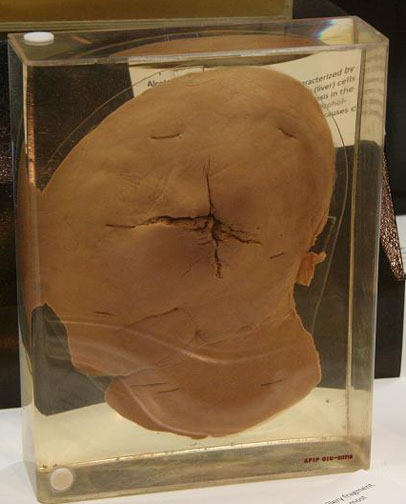
Gunshot wound of the liver
This liver shows damage inflicted by an artillery fragment. The vast, dual blood supply of the liver causes most wounds to bleed profusely. CIU 20718
|

Alcoholic cirrhosis of liver
Cirrhosis involves the entire liver and is characterized by scarring and the replacement of dead hepatic (liver) cells by fatty tissue. Sixty to 70 percent of liver cirrhosis in the United States is associated with alcohol abuse. Alcohol-related liver disease is one of the top ten leading causes of death in the United States.
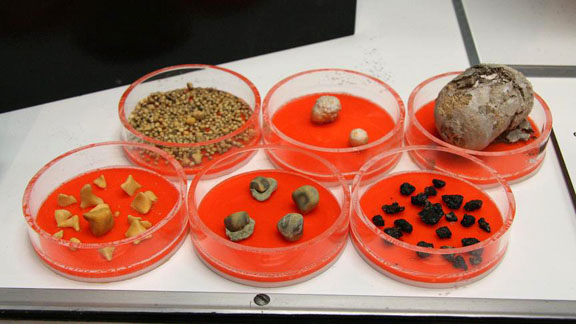
Gallstones
Gallstones form when fat particles, particularly cholesterol, crystallize and accumulate in the gallbladder. Passage of these hard “stones” through the bile duct, which connects the gallbladder with the intestine, can be extremely painful. Sometimes, stones completely block the duct, obstructing the passage of bile. Gallstones are often diagnosed after a high fat meal. Meals high in fat stimulate the release of intestinal hormones that cause the muscle in the walls of the gallbladder to vigorously contract, emptying the bile into the small intestine near its attachment to the stomach. The strong contraction may force a gallstone into the opening. Gallstones are most common in obese, middle-aged women. These gallstones illustrate the variation in size and shape these formations can take.
|
|
|
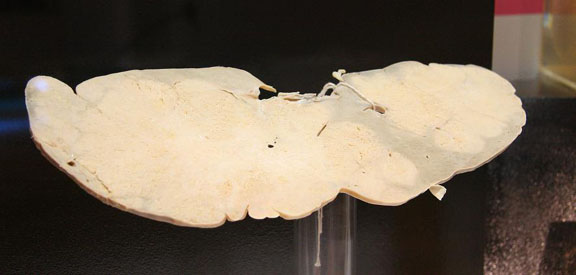
Metastatic carcinoma of liver, plastinated
The large light-colored tumor is clearly delineated. The tumor has replaced much of the normal tissue in this cross-section of the liver. NMHM 1987.3005.15
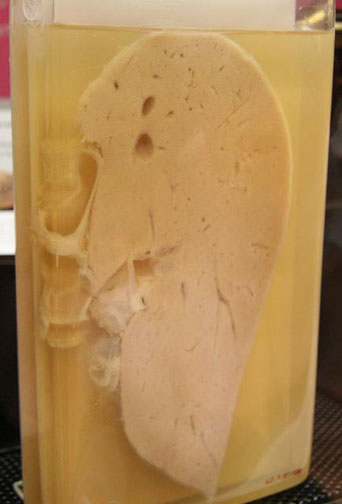
Yellow fever of liver
Yellow fever is an acute hemorrhagic disease caused by an RNA virus of the
Flaviviridae
family. The virus is transmitted by the bite of the female
Aedes aegypti
mosquito. Yellow fever is endemic to the tropics and subtropics and can be found in Africa, South America and the Caribbean. AFIP 23406
|
 The liver is the largest gland in the body, weighing between 3 and 5 pounds. It has four lobes of different sizes and occupies a large portion of the upper right section of the abdomen, just under the ribs. The liver performs a wide range of vital functions.
The liver is the largest gland in the body, weighing between 3 and 5 pounds. It has four lobes of different sizes and occupies a large portion of the upper right section of the abdomen, just under the ribs. The liver performs a wide range of vital functions.












